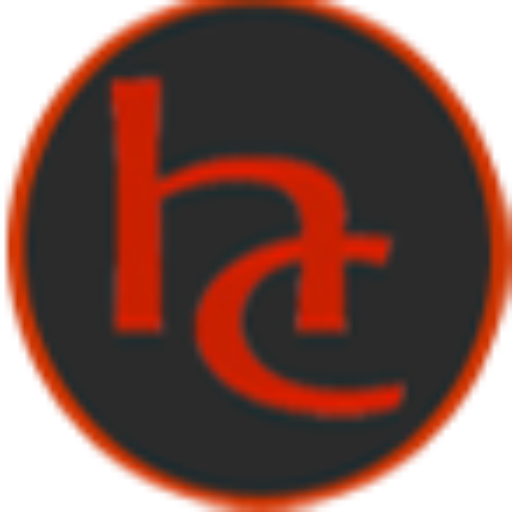Understanding Sadistic Behavior : Causes, Types, Signs, and Support
Sadistic Behavior refers to deriving pleasure—sometimes sexual, sometimes purely psychological—from another person’s pain, humiliation, or loss of control. It is a complex, multidimensional phenomenon that can range from everyday cruelty to severe, criminal violence. The content below expands on causes, forms, warning signs, impacts, support options, prevention, and historically notable cases—while keeping a clear line between consensual kink and harmful abuse. All original references have been preserved.
Table of Contents – Sadistic Behavior
- Understanding Sadism
- Types of Sadistic Behavior
- The Psychology of Sadism
- Signs of Sadistic Behavior
- Effects on Victims & Society
- Options for Sadistic Behavior
- Prevention of Sadistic Behavior
- Famous Cases of Sadistic Behavior
- FAQs
- A Compassionate Path Forward
Sadistic behavior is the deliberate act of causing pain, suffering, or humiliation to others for personal pleasure, gratification, or control. It ranges from subtle everyday cruelty, such as spreading rumors, to extreme actions like physical violence or abuse. Psychologists link it to Dark Triad traits—narcissism, Machiavellianism, and psychopathy—showing its roots in power, manipulation, and lack of empathy. Understanding sadism helps distinguish consensual practices like BDSM from harmful, non-consensual abuse, while highlighting the need for awareness, prevention, and empathy-driven alternatives.

Understanding Sadism
People that display Sadistic Behavior have a personality disorder characterized by the infliction of pain, humiliation, and suffering on others for personal pleasure. It is a complex phenomenon that has puzzled psychologists and laypeople for decades. The causes of sadistic behavior are multifactorial, involving a combination of biological, psychological, and environmental factors.
Biological Factors
Biologically, some researchers have suggested that sadistic behavior may have a genetic component. Studies have shown that people with a certain genetic makeup may be predisposed to aggressive and violent behavior. Additionally, neuroimaging research has reported structural and functional differences in brain regions such as the prefrontal cortex and amygdala—areas associated with emotional regulation, decision-making, and empathy. These differences do not predetermine behavior, but can interact with life experiences to increase risk.
Childhood Experiences
Psychologically, childhood experiences may play a crucial role in the development of sadistic behavior. Some theorists argue that childhood trauma, such as physical or sexual abuse, neglect, or witnessing violence, can lead to the internalization of aggressive and violent tendencies. These tendencies may manifest as sadistic behavior later in life as a coping mechanism or a way to regain a sense of power and control.
Environmental & Social Factors
Environmental factors, such as exposure to violent media or peer pressure, may also contribute. Individuals repeatedly exposed to violent media (e.g., films, video games, or music) may be more likely to show aggressive attitudes and behaviors, especially when combined with other risks. Likewise, peer dynamics and certain subcultures can normalize cruelty, amplifying harmful behavior over time.
Sadistic behavior is a complex phenomenon that arises from a combination of biological, psychological, and environmental factors. Understanding these causes and risk factors is crucial for developing effective prevention and treatment strategies.
Types of Sadistic Behavior
Sadistic behavior can take many forms, ranging from physical violence and torture to emotional abuse and manipulation. Some common types of sadistic behavior include:
- Physical violence: The use of force to inflict pain and suffering on others, such as hitting, punching, kicking, or strangling.
- Sexual sadism: Deriving sexual pleasure from inflicting pain and suffering on others, including non-consensual acts (e.g., rape) and, separately, consensual BDSM activities. Importantly, consensual BDSM involves negotiation, boundaries, and aftercare; non-consensual harm is abuse and a crime.
- Emotional abuse: Using words, gestures, or actions to demean, humiliate, or manipulate others (e.g., name-calling, gaslighting, threats, or withholding affection).
- Animal cruelty: Harming or killing animals for personal pleasure or entertainment.
- Cyberbullying: Using the internet or social media to harass, intimidate, or humiliate others (e.g., cyberstalking, doxxing, or spreading rumors).
Context Matters
Each type has unique mechanisms and consequences, but all share a core theme: pleasure or reward associated with another’s suffering. In clinical and legal settings, intent, consent, and harm are central to how behavior is assessed and addressed.
The Psychology of Sadism
The psychology of sadism is multifaceted, involving cognitive, emotional, and social processes.
Lack of Empathy & Moral Disengagement
One key feature is reduced empathy or concern for others’ well-being. People with sadistic tendencies may struggle to recognize, resonate with, or prioritize others’ emotions, which can enable moral disengagement and rationalization of harm.
Power, Control, and Dominance
Sadistic behavior may be driven by a desire for power and dominance. The act of controlling or subjugating another person can itself become reinforcing, creating cycles of coercion or escalating cruelty.
Impulse and Control
Impaired impulse control and emotion regulation (especially anger and hostility) can increase the likelihood of acting on sadistic urges. Skills training that targets these systems can reduce risk over time.
Not all people who engage in cruel behavior meet criteria for a clinical diagnosis. Situational pressures, group dynamics, and media models can precipitate harmful acts in individuals without entrenched traits. Where a diagnosable disorder exists, drivers tend to be more pervasive and stable.
Signs of Sadistic Behavior
Identifying sadistic behavior can be challenging, because some individuals mask tendencies with charm or pro-social façades. Potential red flags include:
- Enjoying or seeking opportunities to cause pain, humiliation, or suffering
- Marked lack of empathy or concern for others
- Inflated sense of power, entitlement, or superiority
- History of violent or aggressive acts (including coercive control)
- Fascination with violence, degradation, or death
- Absence of remorse, guilt, or accountability
- Disregard for rules, boundaries, and social norms
- History of trauma or abuse (a risk factor, not a justification)
Effects of Sadism on Victims and Society
Victims of sadistic abuse can experience severe physical injuries alongside deep psychological harm, including trauma, anxiety, depression, and suicidal ideation. Post-traumatic stress can involve hypervigilance, intrusive memories, and avoidance; learn more about PTSD symptoms and supports at trusted clinical resources.
On a societal level, unchecked sadism contributes to cycles of violence, overburdened health and justice systems, and erosion of trust in communities. When cruelty becomes normalized (offline or online), bystanders may disengage, and victims may be less likely to seek help.
Options for Sadistic Behavior
Treating sadistic behavior is challenging but possible—especially when addressed early and comprehensively.
- Psychotherapy: Individual treatment can target the roots of cruelty (e.g., trauma processing, cognitive distortions, empathy building) and develop self-regulation skills. Modalities may include CBT for beliefs and behaviors, DBT for emotion regulation and distress tolerance, and psychodynamic approaches for deeper pattern work.
- Medication: In select cases, medication can help manage aggression, impulsivity, or co-occurring conditions (e.g., mood or anxiety disorders). It is typically adjunctive to therapy.
- Group therapy & accountability: Carefully structured groups can foster insight, perspective-taking, and prosocial norms, while emphasizing responsibility and repair.

Safety & Support Planning
For families and partners, safety planning, boundaries, and access to crisis resources are essential. Documentation of incidents, seeking professional guidance, and engaging community supports can reduce harm.
Prevention of Sadistic Behavior
Preventing sadistic behavior means reducing risk factors and strengthening protective ones across the lifespan.
- Early intervention: Identify and address childhood trauma, abuse, or neglect to interrupt pathways toward aggression.
- Education & awareness: Promote healthy communication, consent, and conflict resolution; challenge myths that glorify cruelty.
- Media literacy: Teach critical consumption skills to distinguish entertainment from endorsement of violence.
- Community engagement: Build cultures of empathy, accountability, and bystander action; support restorative practices where appropriate.
Famous Cases of Sadistic Behavior
History documents extreme instances where sadism intersected with serial violence. These cases underscore the urgent need for early detection and prevention:
- Ted Bundy: Confessed to murdering at least 30 young women in the 1970s; used charm and manipulation to gain trust.
- Jeffrey Dahmer: Killed 17 men and boys between 1978 and 1991; reports describe sadistic and necrophilic features.
- John Wayne Gacy: Raped and murdered at least 33 teenage boys and young men in the 1970s; infamously maintained a clown persona.
Frequently Asked Questions – Sadistic Behavior
Is sadism the same as enjoying consensual BDSM?
No. Consensual BDSM involves planning, negotiation, safe words, boundaries, and aftercare. It centers mutual pleasure and consent. Non-consensual cruelty—physical or psychological—is abuse and often criminal, regardless of any personal gratification. For an overview of S&M within consensual kink culture, see this guide.
Do people “become” sadistic because of violent media alone?
Media exposure alone rarely explains entrenched sadism. It can contribute as a risk factor—especially alongside trauma, poor emotion regulation, or peer norms that reward cruelty—but it is not a solitary cause.
Can therapy really help?
Yes, particularly when the individual is motivated and interventions are sustained. Approaches like CBT, DBT, and trauma-informed care target thinking patterns, emotion regulation, and empathy. See this overview of treatment perspectives: MentalHealth.com.
Are all people with sadistic traits violent offenders?
No. Severity varies widely. Some individuals show subclinical tendencies (e.g., enjoying minor humiliation games) without crossing legal or ethical lines. Risk increases when empathy is low, disinhibition is high, and power over others is accessible.
What should I do if I suspect someone is being harmed?
Prioritize safety: document concerns, encourage professional support, and contact local services or emergency responders if someone is in immediate danger. Help the person access trauma-informed care and trusted social support.
Choosing Compassion Over Cruelty: Your Next Steps
Sadistic behavior thrives where empathy is absent and power goes unchecked. By naming the drivers—biology, psychology, and environment—we create room for change: better screening and early intervention for kids, stronger social norms that prize consent and care, and clinical pathways that teach accountability, regulation, and empathy. Whether you’re a survivor seeking support, a practitioner developing treatment plans, or a community leader shaping culture, your actions matter. When we commit to compassion, clear boundaries, and evidence-based care, we make it harder for cruelty to take root—and easier for people to heal.




You must be logged in to post a comment.